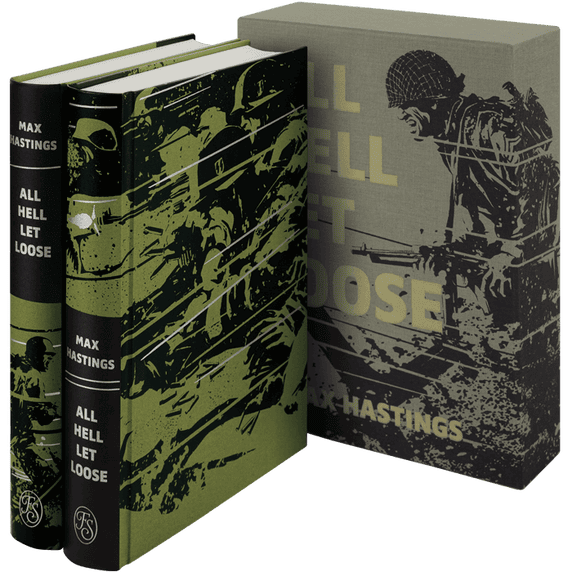
All Hell Let Loose
Published in a richly illustrated Folio Society edition, Max Hastings’ All Hell Let Loose is a people’s history of the Second World War from one of its greatest historians: the complete story of the conflict.
Introduced by George Harsh
The thrilling true story of the largest British-led mass-escape of the Second World War.
In 1943, 600 disparate Allied POWs in the notorious Stalag Luft III prison camp plotted an escape unprecedented in its scale and daring. Led by the formidable Squadron Leader Roger Bushell – or ‘Big X’ as he was known on the escape committee – the plan involved the digging of three tunnels (‘Tom’, ‘Dick’ and ‘Harry’) and the disposal of over 100 tonnes of yellow sand, all under the noses of the German ‘ferrets’, or guards.
The tunnels were lit with electric lighting stolen from the goons, shored up with boards from their own beds, traversed on an underground railway and ventilated with home-made bellows crafted from wood, canvas bags and bully-beef tins. But escape was only the beginning: 400 forged passes would be needed, some 200 suits of clothes tailored, maps memorised and languages learnt. If all went well, a staggering 200 prisoners would be freed in the largest British-led breakout of the Second World War.
Three-quarter-bound in cloth with a cloth front board blocked with a design by Richard Sweeney
Set in Joanna with Gill Sans display
248 pages
Frontispiece and 16 pages of colour and black & white plates, and 5 integrated diagrams
Printed endpapers
Plain slipcase
9½˝ x 6 ¼˝
Paul Brickhill (1916–91) was born in Melbourne, Australia, and educated in Sydney, after which he became a journalist for the Sydney Sun. In January 1941 he enlisted in the Royal Australian Air Force and attended training in Australia and Canada as part of the Empire Air Training Scheme. He became a fighter pilot for the RAF but, on 17 March 1943, was shot down while piloting a Spitfire over Tunisia. Brickhill became a prisoner of war and was sent to Stalag Luft III, where he assisted in a mass breakout in March 1944, which in turn became the basis of his 1950 bestseller The Great Escape (The Folio Society, 2016). After the war he continued to work in journalism and author books including The Dam Busters (1951; The Folio Society, 2015) and Reach for the Sky (1954; The Folio Society, 2017). He died in Sydney in 1991.
Designed in series with our bestselling The Dam Busters, and featuring a binding by the same artist, this new edition is illustrated with photographs from the National Archives and the Imperial War Museum, along with original colour sketches of the men working in the tunnels by fellow-prisoner Ley Kenyon, who also provides integrated images and pictorial endpapers.
